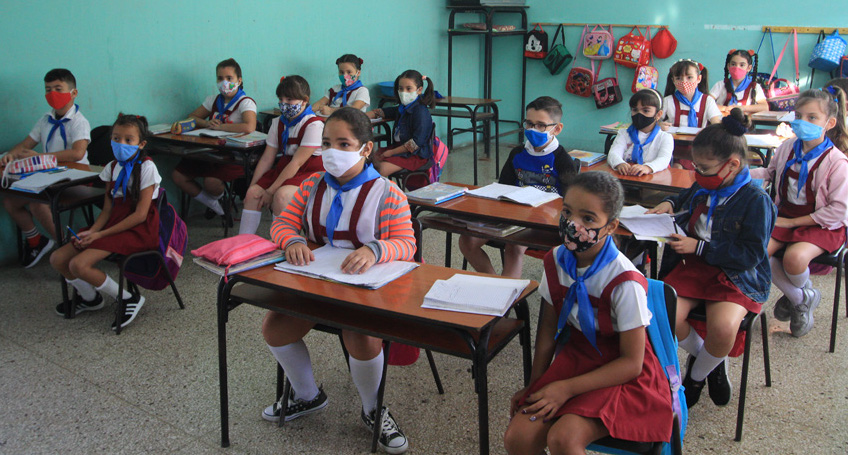On October 4, 12th-grade students, third-year Technical and Professional Education, and Pedagogical Training students in their last two years returned to classrooms in Cuba. Those in the remaining education levels will return to school in November, being phased in. The plans are based on forecasts that the incidence rates of Covid-19 will decrease to manageable levels.
But "for the people things are not as easy as they are for the State, which sets a date and that's it," a mother residing in Mayarí, Holguín, told DIARIO DE CUBA.
"During the pandemic, children have grown; their clothes have become too small, even their uniforms; their shoes no longer fit, or have broken; their book bags have worn out because they were used for something else, or are simply too old. And, on the street, prices are sky high," added this mother of two children who attend Primary school.
"A pair of shoes costs 3,000 pesos (120 dollars) and a backpack, 1,500 pesos (60 dollars), for even the simplest ones. Not to mention socks; I haven't found any yet, but a pair cost 150 pesos (six dollars) or more. For a uniform shirt I paid 400 pesos ($16) because the old ones are too tight. So, it's impossible," she explained.
Before the "Ordering Task", prices were already unaffordable for many Cuban families, as they were totally out of proportion with the meager wages paid and regulated by the State, the country's main employer. With the inflation wrought by the implementation of financial and wage reform, in the midst of the worst crisis in the system, the gaps have only widened.
Ines, the mother of a school-age child, told us that "the preparations are terrible, but the worst thing is how we’re going to guarantee a snack for the children every day. Here in Mayarí, at least, a pound of sugar costs 60 pesos, and finding it isn't easy. And when school starts it will get even more difficult. They're not selling bread at regular markets, or cookies. There’s also no butter, no mayonnaise, no eggs...nothing."
"We could get by on sweets, but no way. Not even individuals can sell with any stability. Only when they manage to get sugar, eggs and flour. One day we'll have something to put in the lunch box, but most of the time there won't be anything. What is to be done, then? We'll have to sending him to school," she says.
Another issue is the vaccination of schoolchildren. Administrators have assured people that, until now, vaccination has not been mandatory to attend class, that they are only keeping records, but "they are putting a lot of pressure on people to get them vaccinated," says Idania, who has one child in preschool and another in the seventh grade.
"The teacher is pressuring us all the time, saying that they're asking her for that information, that the girl has to be vaccinated by that date. Stuff like that. I'm afraid to vaccinate them because they had Covid just a month and a half ago. But I'm going to have to do it, so that they'll leave me alone and my girl has no trouble at school," she added.
Cuba is the first country that has vaccinated children on a massive scale, and the official media stresses this in its propaganda, praising the Government's management, much criticized in the midst of the crisis.
The World Health Organization (WHO), however, has not yet approved any vaccines for children under 12 years of age, and is recommending that adolescents be vaccinated only if they have a comorbidity, and not recommending that vaccination be a requisite to return to class.
In addition, the WHO has not yet endorsed any Cuban vaccines, which are the ones being administered on the island.
The current situation in Cuba is certainly a very adverse one after the largest wave of infections and deaths in the country from Covid-19, recorded between June and September. Officially, positives confirmed during the pandemic have not even surpassed 10% of the population. And, thanks to the vaccination campaign, the unstoppable circulation of the coronavirus should have been halted.
However, due to the insufficiency of diagnostic tests, and other irregularities, it is surmisable that the infection levels in the country have been, in reality, five to seven times higher than those acknowledged by the Government.
